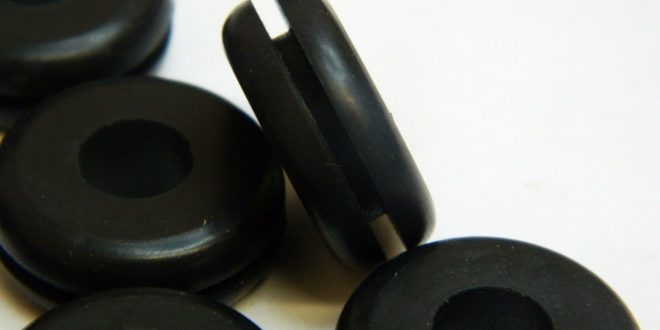No matter how common grommets seem, they serve a wide range of applications. They can come in many different sizes and are found in common items starting from electrical wires, to the holes you feed your shoelaces through to the rings on your shower curtain.
Grommets can be made of rubber, metal or plastic and they all serve a dual purpose of both protecting and reinforcing a hole that is created in a less durable material.
When the hole has rough and when the material where the hole is pierced is delicate, the grommet is used to protect the hole from any possible damage and it safeguards what passes through it.
Finding rubber grommets is easy, but finding the right ones for you may be a complicated task. We are going to tell you more about the different types and how to choose the right manufacturer and seller.
Types of Rubber Grommets
There are a lot of different types and here we are going to tell you more about the most common ones.
Push-in Grommet
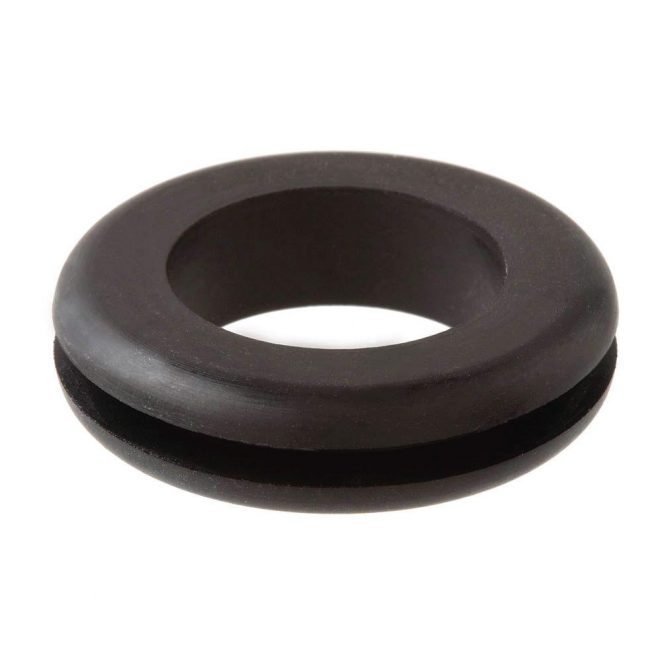
With a push-in grommet, you can fill in a hole. The most common type comes with a hole partially down the part and that helps locate a mating part.
This type features an undercut and that is used to stop the part when it is inserted and ribs on one side. The rib gives extra interference when the grommet is snapped in.
Bonded Grommet
This type of grommets illustrates the ability to bond different rubber polymers to substrates, for example/plastic or rubber and metal.
This bonding process eliminates the assembly steps and it also creates an overall better seal. Bonding the seal onto the substrates will also help with tolerance stack-up in seal design.
UL-50 Grommet
If you find a place that creates custom grommets, you will be able to find this type without any issue. You can look for a place that uses materials to meet certain material specifications or regulatory requirements.
The UL-50 grommet is usually used for electrical enclosures. This type of grommet is made from a silicone that is tested under the UL JMLU2 standard for gasket and seals, using the UL 157 testing protocols.
Logo Grommet
If you want your company to be recognizable you can have that with the unique logo grommets. They can add marketing flair and enhance a product and your brand.
These types of grommets have to be manufactured and custom created for your needs. There are grommets that you will be able to buy in any store and then have them modified to add that special touch.
The companies that create logo grommets, use high precision CNC machining centers, and then cut company logos into the mold to show up on parts.
Wire Grommet
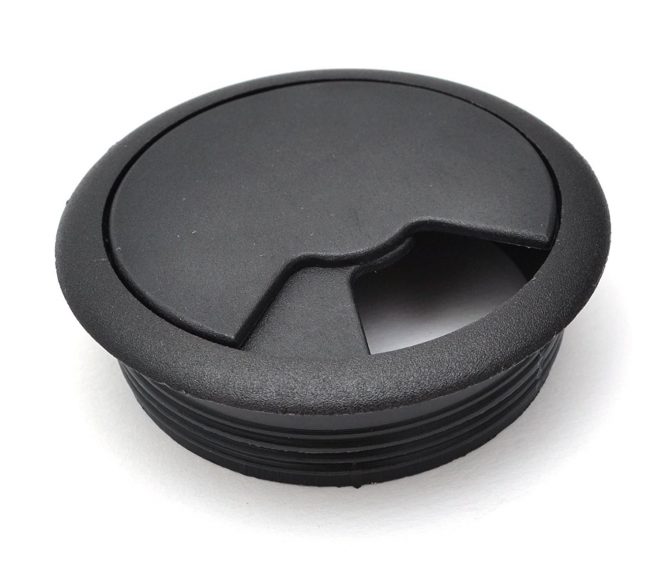
This type of grommets is used to protect wires from rough and sharp edges. There are many types of rubber that act like insulators that protect the wires.
You can find many different sizes of wire grommets that companies use to feed wires through. They can also be used as flow restrictors.
Types of rubber used to make grommets
Now that you know what kinds of rubber grommets are available on the market, we can tell you more about their manufacturing process. Here are the types of rubber used:
Butyl rubber or isobutylene isoprene elastomer
This type of rubber is resistant to water, alkalis, steam, and oxygenated solvents. It means that you won’t have to worry about the rubber damaging with use.
Butyl rubber has low gas permeation and it is capable of providing high-energy absorption. It also has a good hot tear strength which makes the rubber really durable.
Nitrile and styrene-butadiene rubber (SBR)
This type of rubber is mostly used with oils, alcohol and hydraulic flurries. There is a variety of proprietary compounds available for specific applications.
Depending on the type of rubber you are looking for, this website can give you more information about the manufacturing process and types of grommets available.
Advantages
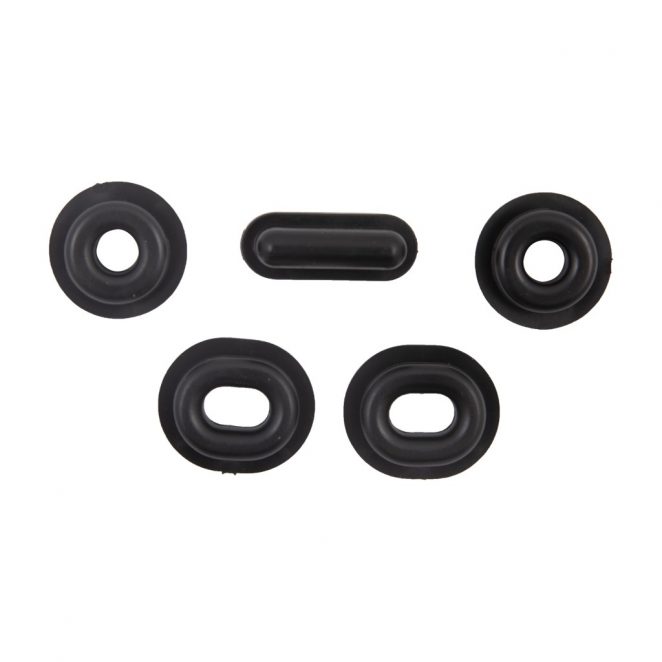
There are a lot of advantages of rubber grommets and the first one is that they offer structural reliability.
Molded and strain relief grommets remove the need for knot tying. They also eradicate any wounding through or fraying of the hole when ropes or wires are threaded through.
When a hard material is used (like metal) they have holes with pointed edges. Metal grommets are good for some uses, but they are really risky for soft materials passing through the leads. They can cause additional damage to the material and that is the opposite of the grommet purpose.
To prevent the possibility of damaging, plastic or rubber grommets are used to provide a protective lining to the hole.
The rubber grommets allow cables and wires to pass through studs and floor beams safely. They allow wires to be neatly and safely contained under a raised access floor.
Even though rubber grommets look like a minor part of the modular wiring systems, they are actually extremely important. They are a huge part of modular wiring systems, making cable management and modular wiring very safe and flexible.
Tips for buying Rubber Grommets
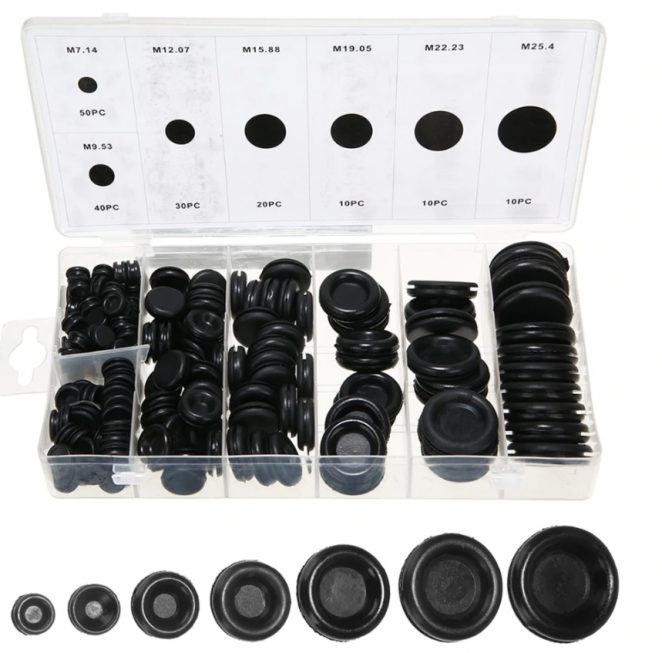
When you go to the store to buy these things or before you order them, make an analysis of the physical specifications so you can select the right one for your needs.
- Shapes – usually round, oblong, oval, rectangular or square;
- Inside Diameter (ID) – this is the diameter of the hole of the grommet. It is measured in millimeters or inches;
- Flange Diameter – this is the diameter of the outer flange provider in the grommet. Same as the ID, it is measured in millimeters or inches;
- Length under Flange – the distance between the lower surface of the flange and the lower end of the grommet. It is measured in millimeters or inches;
- Material of Construction – there are many different materials that are commonly used in the manufacture of grommets. Except for rubber, they can be made out of plastic, stainless steel, aluminum, and zinc.
Is there anything else you want to know about rubber grommets? You can buy rubber grommets, both online and, in a storefront, and if there is anything that you are not sure about always ask the expert or the seller about giving you more information about your specific needs.
 Vermont Republic Second Vermont Republic
Vermont Republic Second Vermont Republic
